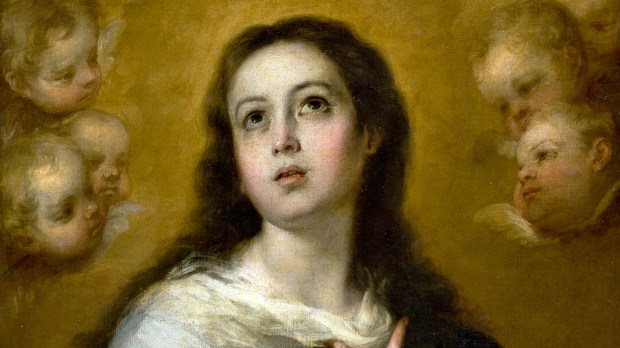The importance of the Virgin Mary in the Christian faith is clear when you look at the Church’s prayers, her hymns, her feast days and church names. Anyone who reads the writings of the Church Fathers can see that the Mother of God has far more than a supporting role in the story of Christ. Even studying the Old Testament reveals her centrality to the mysteries of our faith, as we see her foreshadowed in one book after another.
So it stands to reason that Christians would look to this model for all believers to see how we should live. We study Mariology, learn about apparitions, and ask her to be near to us. But when we open the Bible to read about her, to pore over her actual words instead of the words put into her mouth by later spiritual writers, we find very little. For all the importance the Virgin Mary holds in the Catholic tradition, she doesn’t appear terribly often in Scripture. After Jesus’ childhood, in fact, she only speaks once: at the Wedding Feast at Cana. A handful of other times we see her with Jesus, or with the Apostles after his ascension, but even then we’re given very little.
What did she look like? How did she dress? Was she talkative or more reserved? Did she often raise her voice? Did she laugh much? Were her feelings easily hurt? Was she passionate or more mild-mannered? Was she a good storyteller? Easily startled? Drawn to needy people? The life of the party or more inclined to be on the outside looking in?
We don’t know.
We know that Mary said yes to the Lord, that she praised him, that she told people to do his will, and that she remained close to him. We know that she was without sin, that she suffered much, and that she was an intercessor for her many children (though Jesus was the only one born of her flesh). We know what matters.
But we don’t know a thing about Mary’s personality. On that question, Scripture is silent. And praise the Lord for that.
If the Bible described Mary as being quiet and gentle, smiling placidly whatever the situation, we would think that the only way to holiness was following in that model (as many of us do, formed as we are by staring at sweet, silent statues). We would strive to walk in the ways of her personality, despite having ourselves been formed in a different mold.
Similarly, if Scripture described Mary as a prayer warrior, willing to face down the devil one moment and speak hard truths to sinners the next, we might think that holiness has to look like you’ve been through some spiritual boot camp and come out the other side, tough and intense as Marine Corps Mary.
Either of those images might be an accurate depiction of Mary as she was 2,000 years ago. Truly, they might both be fair descriptions of different moments of her life. But we’re not given those details. Instead, we’re presented with Maria Tabula Rasa, Mary the Blank Slate.
The details of the Blessed Mother’s life and personality have been rubbed out for us lest we focus on the specifics of her temperament and ignore the universality of the call to holiness. We aren’t asked to imitate her personality—that would be too easy and also much too hard. Instead of wrestling with the intricacies of our own dispositions, we’d put on our Mary Mask and hope we could fake it long enough to slide into purgatory. Instead of rejoicing in the inimitable call God has given us, we’d loathe ourselves for not fitting the mold.
But God doesn’t desire billions of indistinguishable saints, identical and interchangeable like cogs in a machine; he’s looking for children, different and difficult and perfectly themselves. We’re asked to embrace the unique way God made us while striving to believe like Mary, trust like Mary, intercede like Mary, serve like Mary.
Mary’s faith is going to look different in a woman with anxiety, a child whose father is deployed, and a man with autism. Mary’s motherhood is going to look one way for cholerics and another for phlegmatics. Suffering alongside Mary will be different when your cross is chronic illness as opposed to an abusive marriage or desperate loneliness.
This is why there are so frustratingly few details about the Blessed Mother that are given to us: so that we can follow her in freedom, being perfectly ourselves. Mary stands as Queen of All Saints, surrounded by holy men and women whose lives and personalities and instincts and hobbies and fears and joys looked nothing like hers. But each of them followed her in faith, hope, and love. That’s enough.

